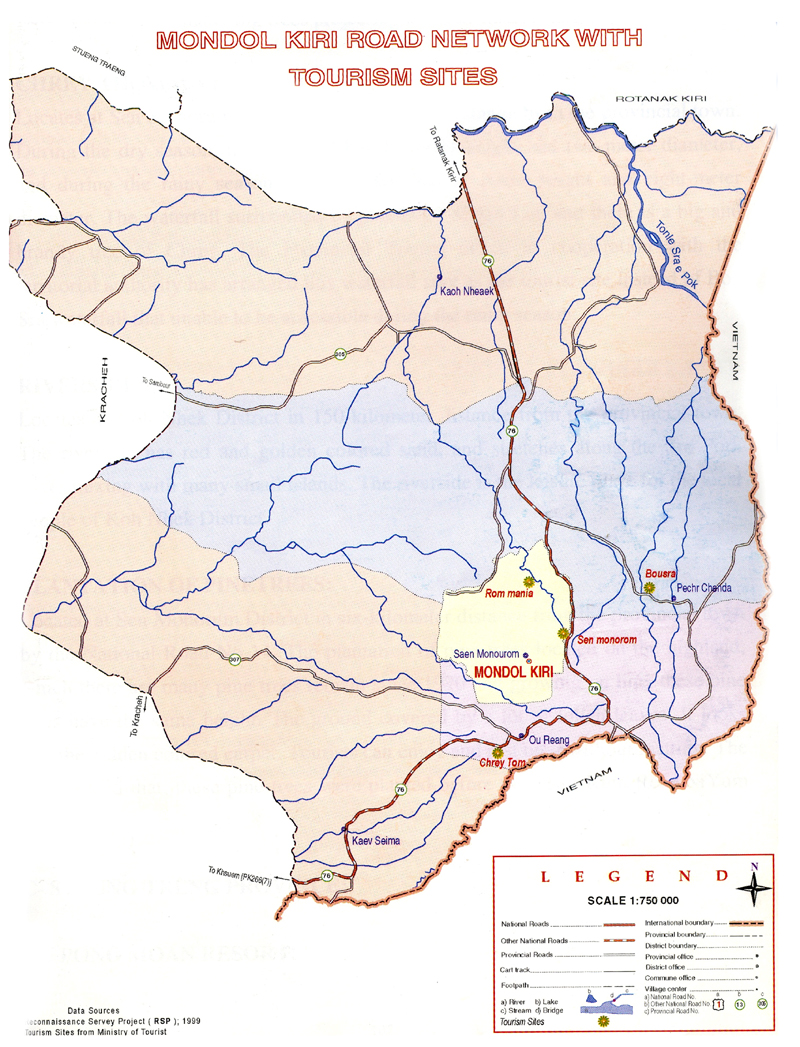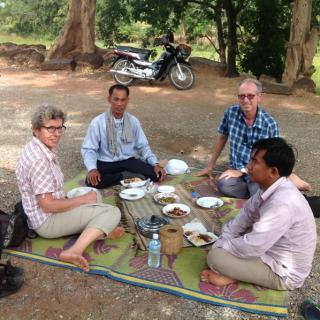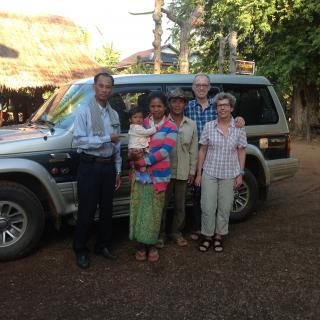


.jpg)









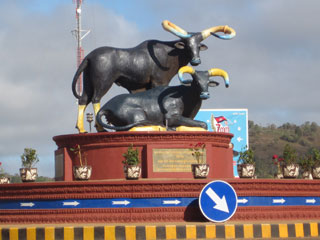 Mondulkiri is an eastern province of Cambodia, which is the most sparsely populated province in the whole country although being the largest province in Cambodia. The province is chock full of natural beauty, with thickly forested mountains, powerful waterfalls and the lush green rolling hills of the western side.
Mondulkiri is an eastern province of Cambodia, which is the most sparsely populated province in the whole country although being the largest province in Cambodia. The province is chock full of natural beauty, with thickly forested mountains, powerful waterfalls and the lush green rolling hills of the western side.
Despite the growing deforestation, especially due to the valuable minerals remaining in the deep red, fertile ground, Mondulkiri has still one of the biggest successional woodlands of Cambodia. Except being in Sen Monorom, you'll find deep pure jungle, with a huge variety of flora and fauna. You may also find gigantic and beautiful waterfalls, where you can take an empowering shower, such as the impressive Bou Sraa.
Sen Monorom is the provincial capital and doesn't show up as a typical Cambodian town, while it is the only town the province has to speak of. With approx. 7500 inhabitants, 20 guesthouses, 12 restaurants, 3 bars and no post office it is often compared to American Wild West frontier towns. Concerning the quietness and beauty of Sen Monorom people from other parts of the country move here and therefore the land price doubled from 2006 to 2007.
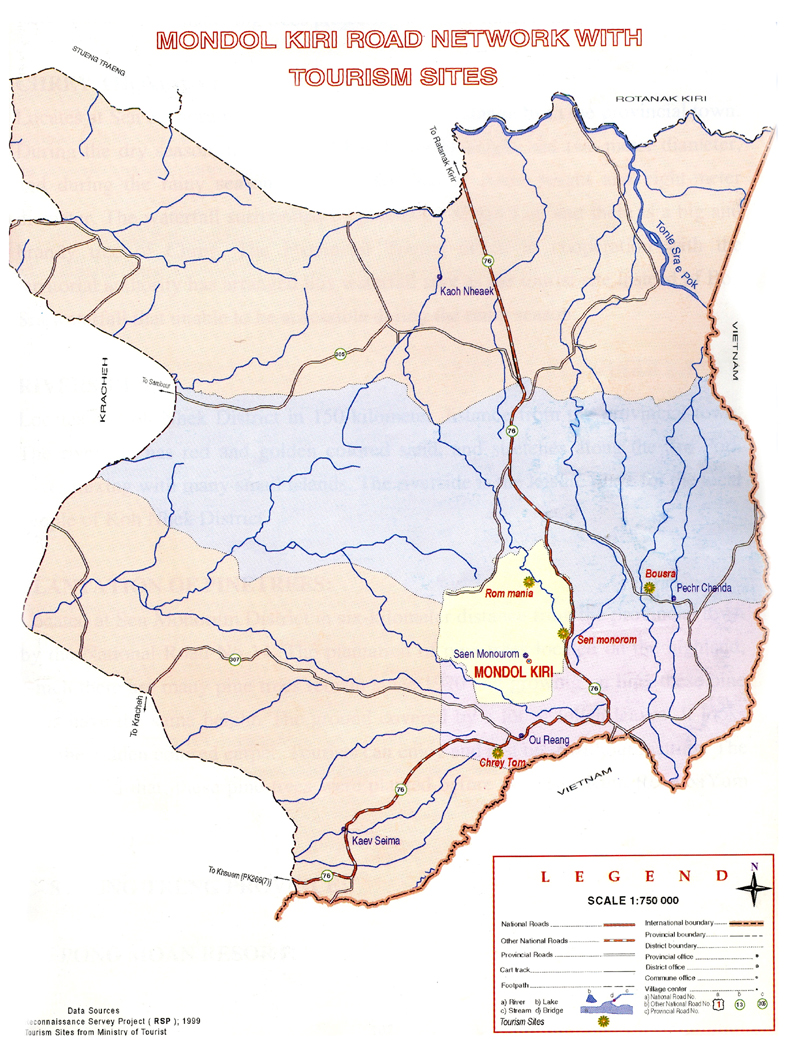 Mondulkiri is an eastern province of Cambodia, which is the most sparsely populated province in the whole country although being the largest province in Cambodia. The province is chock full of natural beauty, with thickly forested mountains, powerful waterfalls and the lush green rolling hills of the western side. Despite the growing deforestation, especially due to the valuable minerals remaining in the deep red, fertile ground, Mondulkiri has still one of the biggest successional woodlands of Cambodia. Except being in Sen Monorom, you'll find deep pure jungle, with a huge variety of flora and fauna. You may also find gigantic and beautiful waterfalls, where you can take an empowering shower, such as the impressive Bou Sraa.
Mondulkiri is an eastern province of Cambodia, which is the most sparsely populated province in the whole country although being the largest province in Cambodia. The province is chock full of natural beauty, with thickly forested mountains, powerful waterfalls and the lush green rolling hills of the western side. Despite the growing deforestation, especially due to the valuable minerals remaining in the deep red, fertile ground, Mondulkiri has still one of the biggest successional woodlands of Cambodia. Except being in Sen Monorom, you'll find deep pure jungle, with a huge variety of flora and fauna. You may also find gigantic and beautiful waterfalls, where you can take an empowering shower, such as the impressive Bou Sraa.
Mondulkiri province is situated on the South - East plateau (approx. altitude around 200-1000 metres), it's capital Sen Monorom is about 375 Km from Phnom Penh. It is bordering Vietnam to the East and South, Ratanakiri to the North, and Kratie province to the West. Beside a bunch of smaller rivers, which grow quite big during the rainy season, there are two bigger rivers crossing the province ( the Preaek Chhbaar and the Preaek Te River ). The total area of Mondulkiri is about 14,288 square kilometres.
Mondulkiri is an eastern province of Cambodia, which is the most sparsely populated province in the whole country although being the largest province in Cambodia. The province is chock full of natural beauty, with thickly forested mountains, powerful waterfalls and the lush green rolling hills of the western side.
Despite the growing deforestation, especially due to the valuable minerals remaining in the deep red, fertile ground, Mondulkiri has still one of the biggest successional woodlands of Cambodia. Except being in Sen Monorom, you'll find deep pure jungle, with a huge variety of flora and fauna. You may also find gigantic and beautiful waterfalls, where you can take an empowering shower, such as the impressive Bou Sraa.
Mondulkiri province has a climate like the other areas in the country, there are 3 seasons:
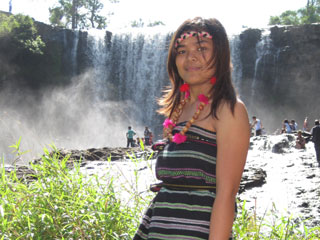 80 percent of the population in Mondulkiri is made up of ten tribal minorities, with the majority of them being the Chunchiet from the tribe of the Phnong. The remaining 20 percent are Khmer, Chinese and Muslim Cham. Most of the population lives off the land, planting rice, fruit trees and a variety of vegetables. Others grow, coffee, strawberries, rubber and cashew nuts.
80 percent of the population in Mondulkiri is made up of ten tribal minorities, with the majority of them being the Chunchiet from the tribe of the Phnong. The remaining 20 percent are Khmer, Chinese and Muslim Cham. Most of the population lives off the land, planting rice, fruit trees and a variety of vegetables. Others grow, coffee, strawberries, rubber and cashew nuts.
Usually they make their living through traditional ways of cultivation (shifting agriculture), hunting and collecting fruits from the forest is a must. These old cultures believe in spirits, derived from their animism beliefs. The population density has a total of 44,913 inhabitants (22,890 male and 22,023 female). This is 3,14 inhabitants/sq km.
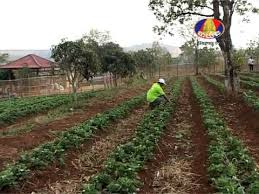 The vast majority of the indigenous peoples living in Mondulkiri are subsistence farmers, who are planting some rice and other vegetables, more or less to feet themselves. There is also a quite common production of the famous rice wine here, which is one of the best in the country. Additionally the indigenous people are selling handmade products such as bracelets, necklaces, scarfs, Kramas etc. to the few visiting tourists.
The vast majority of the indigenous peoples living in Mondulkiri are subsistence farmers, who are planting some rice and other vegetables, more or less to feet themselves. There is also a quite common production of the famous rice wine here, which is one of the best in the country. Additionally the indigenous people are selling handmade products such as bracelets, necklaces, scarfs, Kramas etc. to the few visiting tourists.
Mondulkiri has a quite big influence from Vietnam, which shows you the marked in Sen Monorom. Lots of Vietnamese products are sold here.
Unfortunately in the past 2 years the selling of real estate became a big source of income due to the fact, that international mining companies are buying land to find bauxite (a very valuable mineral). The worst are instances of dispossession of indigenous lands, which are occurring in some parts of the province and also in the adjacent province of Ratanakiri.
Anyhow Mondulkiri is so sparsely populated that the provincial capital does not have an adequate market compete to other provinces of Cambodia. But fertile red soil, water sources, wild animals and quality hardwoods abound and the weather and scenery are perennial assets.
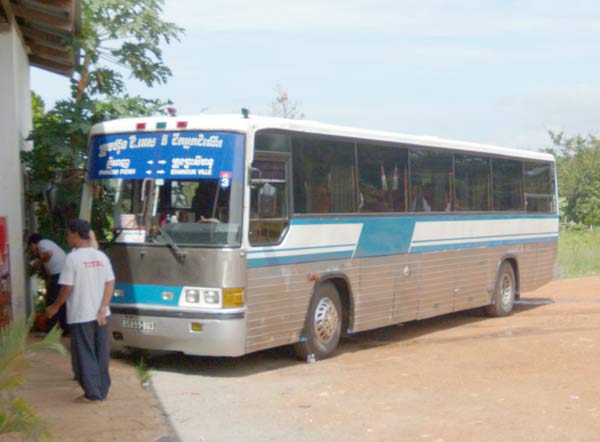 The road from Phnom Penh to Mondulkiri are in good condition for this year 2012, and it will take about 7-8 hours drive. There are many taxi and private transfers available.
The road from Phnom Penh to Mondulkiri are in good condition for this year 2012, and it will take about 7-8 hours drive. There are many taxi and private transfers available.
Coming from Phnom Penh it will at least take a whole day to manage the trip to Sen Monorom, Mondulkiri. Mostly there are only small buses during the dry season, as the road gets slippery and impassable for buses.
This is definitely the easiest and fastest method to go to Mondulkiri. There is quite a lot of pick up's leaving Phnom Penh near the Sorya bus station (street #80) to go to Mondulkiri. As they mostly overload the pick up's, make sure you'll have a seat inside or you'll have to join the windy and quite incomfortable loading area. The average price is about US$10-14 for the whole ride.
Actually there aren't any regular commercial flights to Sen Monorom.
The ride passes by some beautiful and diverse countryside, regardless of which direction you are coming from. Security is not a problem these days.
If you are coming on the bomb-cratered highway from Kratie, go straight when you get into Snoul town, and when you come to the crossing of the road, which leads to Kampong Cham, there is another one (laterite surface) to Mondulkiri you have to take. After about 7 km you come to a four-way junction, where you turn left to Mondulkiri. Snoul to Mondulkiri is about 130 km, and if you are coming from Kratie the entire trip is about 215 km. The trip is one of the nicest you can make by motorbike in the whole country, but you need to do it during the dry season as the road can get one of the worse during the rainy season. The unpaved dust road is nowadays under construction and will definitely become better in oncoming times.
Kampong Cham to Snoul turn off (to go to Mondulkiri) is a doable stretch of Highway 7. It's about 143 km to Snoul and 275 km for the entire trip. Just before you reach Snoul town you will notice a police box on the right. The road curves to the right and left, and you go to the right to reach Mondulkiri. About 7 km down you will come to a four-way junction where you turn left for the ride to Mondulkiri. The road from Snoul to Sen Monorom, Mondulkiri, is a decent, level dirt variety that you can make fairly good time on. This changes during the rainy season when rainfall will make the wet surface as slippery as ice. Food and fuel can be purchased in Snoul town. You?ll have another opportunity to gas up or to buy some food on the half way from Snoul to Sen Monorom as there is a bigger village right before you enter the densely wooded area.
If you want to go by motorcycle from Sen Monorom to Banlung, Rattanakiri, and it is rainy season, read the section entitled The Death Highway or follow this simple advice: don't do it. Even in the dry season, it's a tough trail that will put your riding skills to the test.
Make sure you have spate parts for your motorcycle (see Getting Around chapter for out Biker Checklist), and plenty of food and drinking water. The trip will take about two days during the dry season and Kaoh Nhek town (near halfway) is the only place that sells bottled water and some food. Fuel is also available. Don't do it alone. It's best to have some help if you have a bike breakdown or a mishap. You are a long way from help in most stretches of this remote trail. It would also be best to bring a Khmer speaker along, as the trail intersects sometimes with other trails and you will want to clarify that you took the proper way when you do come across somebody. It's definitely an adventure, if you try to tackle it, be fully prepared so you have an opportunity to enjoy it. (Further details are available in the Ratanakiri province guide.)
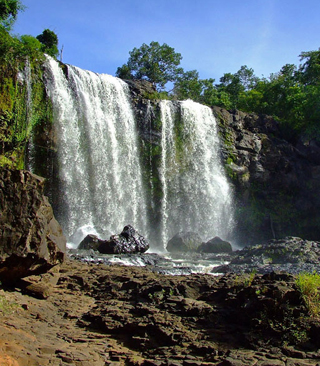 Busra waterfall is located in Pich Chenda district about 43 kilometers northeast of Mondulkiri provincial town, Sen Monorom. Busra is considered by many to be the most beautiful waterfall in Mondulkiri. The waterfall is divided into three stages:
Busra waterfall is located in Pich Chenda district about 43 kilometers northeast of Mondulkiri provincial town, Sen Monorom. Busra is considered by many to be the most beautiful waterfall in Mondulkiri. The waterfall is divided into three stages:
The double-drop waterfall is very popular with the locals who use it as a bathing and picnic spot. Its top level is around 10m in height, and the lower level drops down 25m to the gorge. It is in a scenic and pristine setting and offers great photo ops. Nearby is the ethnic Phnong village called Pichinda which has a small guesthouse. Some snacks are available at the falls, but bring food if you would like something more substantial. Then we head northeast to Bou Sra. We never rode north on this road before and I am surprised that right behind the first hill it is getting rougher than most we have seen yesterday. We cross a small river on an improvised bridge and are charged 500 Riel each by a bunch of kids.
After that the road is getting somewhat smoother but still requires a lot of attention. There are deep grooves in the road, most likely left behind my heavy cars. Once you get into one of those it leaves you with only very few options other than just following it hoping not to get stuck. Yet the ground is solid and provides good grip for the tires. We keep going and after some time we do not see settlements anymore. The forest is relatively dense and in some places impenetrable. Both of us have to restart the bike a number of times and while we proceed with moderate speed it remains a challenge in many places to maneuver those relatively heavy bikes.
The way I start this bike many times is I put it on the stand, climb on the moto and start it from this relatively comfortable position, before I flap the stand and go. However, I realize that the stand is about to break off and can hardly support the bike anymore. The road is getting tougher; there are many rocks and countless obstacles, sometimes forcing us to ride next to the road. And hills are pretty steep in some instances. Overall we move quite slowly. After about 40 minutes we have a break. I try to figure how Pongro is riding down those hills and ask him. I learn that he controls the speed entirely with the clutch.
I am about to suggest using a lower gear. To demonstrate how he does it he takes the clutch clever and holds it tight. Oddly, at precisely this moment the clutch cable breaks. I does not take us long to realize that it is impossible to ride this bike without clutch. Ironically, today is the first day we go without the heavy set of tools and spare parts we usually carry and which includes a clutch cable. Pongro is still confident that we can manage to fix the bike here. Once in while people pass on small, old Honda's, sometimes badly overloaded but always very skillfully finding the way between all those rocks.
We learn that the way to Bou Sra is still longer than the way back to Sen Monorom. Furthermore the road is getting tougher from here. And it is very unlikely we find somebody there who can fix the bike.One of those guys stops for some time and Pongro borrows some tools and wire in order to try fixing the moto. The Phnong guy joins and for some time they try hard. However, it is becoming increasingly clear that this won?t work out.
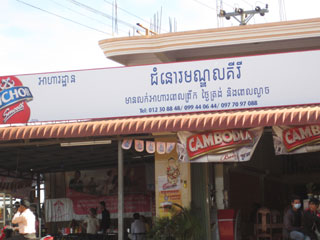 Because this is a small and little developed tourist destination, the restaurants don't think about serving tourists. There just haven't been many coming to Sen Monorom. And with the locals usually eating at home, the restaurants don't stock much food. The procedure here is to go one our before to the restaurant you would like to eat and tell them what you would like to eat. You can leave then, while they go to the market to buy the ingredients and return to the restaurant to prepare the dishes. An alternative would be to stop by in the morning and tell them what you want for lunch or evening meal. It's certainly not the norm at destinations around Cambodia, but here it seems to work out okay. Anyhow there are more restaurants opening during the last 2 years, which serve mostly Khmer or Vietnamese food. You might ask them to combine something for a more European style.
Because this is a small and little developed tourist destination, the restaurants don't think about serving tourists. There just haven't been many coming to Sen Monorom. And with the locals usually eating at home, the restaurants don't stock much food. The procedure here is to go one our before to the restaurant you would like to eat and tell them what you would like to eat. You can leave then, while they go to the market to buy the ingredients and return to the restaurant to prepare the dishes. An alternative would be to stop by in the morning and tell them what you want for lunch or evening meal. It's certainly not the norm at destinations around Cambodia, but here it seems to work out okay. Anyhow there are more restaurants opening during the last 2 years, which serve mostly Khmer or Vietnamese food. You might ask them to combine something for a more European style.
Chom Nor Mondulkiri restaurant is the biggest in town and serving asian and european foods.
It's actually the oldest accommodation place in Sen Monorom serving their guests also fresh, tasty and reasonable dishes. It's located east from the market next to the street leading to the centre.
It's also next to the street leading to the centre, but a bit further away. They have a small restaurant offering quite common Khmer dishes.
This guesthouse is 1,5km far from the centre on the main road, which goes to Snoul. It covers also a small restaurant offering a limited menu.
There isn't a name, but it's easy to find. It's a very simple place, but they do a good job concerning the food and they have drinks with ice. The prices are very reasonable. It's right next to the centres round about (two buffalos).
There are two restaurants near the entrance area to the market. They double as community entertainment centers; local residents gather outside to gaze at videos on the TV screens inside. They can also serve the necessary karaoke hall function.
If you're eager to have some real European food made by a European you'll need to visit the Bananas. The wodden house next to a tiny creek is owned by a German woman named Tanja. She is a cook and cooks on request. The dishes are real good and quite reasonable. It's situated down the hill from the centre and then left before you pass the bridge.
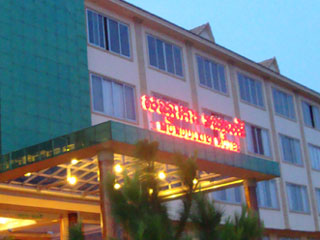 Mondulkiri Hotel & Restaurant: The biggest hotel (855 (0) 12 777 057, 11/12 22 99 82)
Mondulkiri Hotel & Restaurant: The biggest hotel (855 (0) 12 777 057, 11/12 22 99 82)This hotel, with its hill top views, offers 50 rooms including 2 luxurious bungalows. Air-conditioning is available in 16 of the rooms, the rest are provided with fans. There are 23 doubles ranging from $15 to $20 and 27 twin rooms starting at $25 up to $35, alas single rooms are not available. The hotels’ restaurant, located along the river, is open for breakfast, lunch and dinner. Prices for breakfast are approximately $3 and lunch and dinner start at $3 up to $10. There is also a meeting room, with many facilities available. Other services include laundry, car rental and internet. English speaking staff is available.
Centrally located the Oeun Sakona offers 47 rooms with hot water along with 12 air-conditioned rooms at $20 while the remaining rooms are provided with fans for $12. There are 4 single rooms, all with fans, that cost $5.50. For large families there is one room containing four beds. The hotel also offers discounts to groups that occupy 10 or more rooms. The restaurant serves Asian and Western meals three times a day. The food prices differ from approximately $2.50 in the morning to $4 for lunch and dinner. A meeting room is available, equipped with modern facilities. Other services include laundry, tourist information, tour guides, motorbike rentals and bus tickets.
This nice guesthouse with a lot of bungalows is situated past the Sen Monorom airstrip. It feels like that this guesthouse is far more targeted towards the ngo crowd rather than independent travellers and backpackers. Mr Vibol speaks fine English, though when we visited he appeared to be pretty weary of answering backpacker questions. The restaurant here dishes up some good food; e.g. the steamed fish looked particularly good, but the preparation of the food takes quite a time. The room rates are from US$8-30, depending on what you want to be included and for how much people.
It's actually the oldest accommodation place in Sen Monorom and for the budget traveller it remains the best choice. Rooms are very clean and kitted out with TV, cold-water showers and massive wooden chairs. Motorbikes can be rented here and trekking and elephant riding can also be organised. It's located east from the market next to the street leading to the centre.
It's also next to the street leading to the centre, but a bit further away. They have a small restaurant offering quite common Khmer dishes. The room rates are around US$8-10.
This big guesthouse is 1,5km far from the centre on the main road, which goes to Snoul. It covers also a small restaurant offering a limited menu. They have nice bungalows with wonderful views over the rolling hills. The room rates are around US$10.
It's the first accommodation option outside Sen Monorom. Located in a magical valley 2 km above the town, it is surrounded by the misty hills of the Mondulkiri highlands. The lodge is for people who like to explore for themselves, it's not in any guidebook, just follow the signs and you will find us. The room rates are varying so come and have a look yourself.
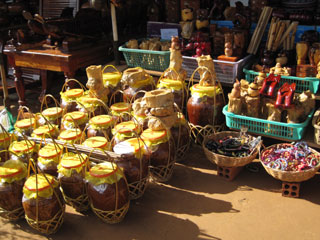 Mondulkiri is an eastern province of Cambodia, which is the most sparsely populated province in the whole country although being the largest province in Cambodia. The province is chock full of natural beauty, with thickly forested mountains, powerful waterfalls and the lush green rolling hills of the western side. Despite the growing deforestation, especially due to the valuable minerals remaining in the deep red, fertile ground, Mondulkiri has still one of the biggest successional woodlands of Cambodia. Except being in Sen Monorom, you'll find deep pure jungle, with a huge variety of flora and fauna. You may also find gigantic and beautiful waterfalls, where you can take an empowering shower, such as the impressive Bou Sraa.
Mondulkiri is an eastern province of Cambodia, which is the most sparsely populated province in the whole country although being the largest province in Cambodia. The province is chock full of natural beauty, with thickly forested mountains, powerful waterfalls and the lush green rolling hills of the western side. Despite the growing deforestation, especially due to the valuable minerals remaining in the deep red, fertile ground, Mondulkiri has still one of the biggest successional woodlands of Cambodia. Except being in Sen Monorom, you'll find deep pure jungle, with a huge variety of flora and fauna. You may also find gigantic and beautiful waterfalls, where you can take an empowering shower, such as the impressive Bou Sraa.
Many of the goods in the market are from nearby Vietnam, It's an all-purpose market, but it doesn't have the feel of the typical Cambodian market, which is probably again due to the closeness of Vietnam and the hill tribe people who come here. There are definitely some nice bracelets, adornments or Kramas made by the hill tribes acquirable. You'll find noodle, dessert and fruit stalls at the font end of the market and the moneychangers are in front as well. They change dollars, riel and the Vietnamese dong.
